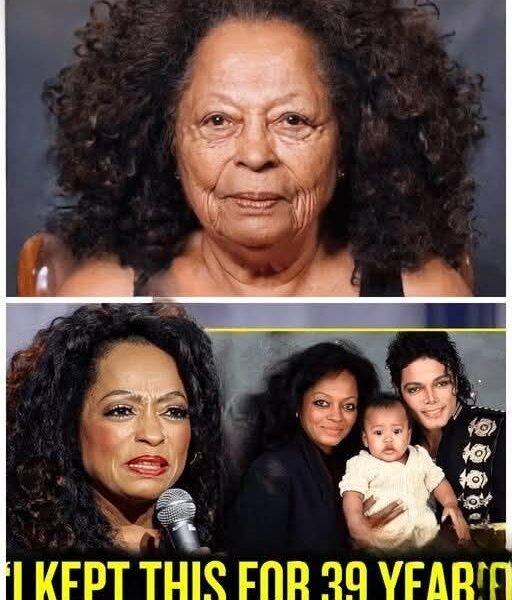Julia Roberts has long stood as one of Hollywood’s most beloved icons—a beacon of warmth, charm, and an almost effortless charisma that radiates through every frame she occupies. But something extraordinary happened when she stepped onto the set of August: Osage County. In a role that stripped away the polished elegance audiences had come to associate with her, Roberts dove headfirst into a raw, unguarded emotional realm, revealing layers of vulnerability that even longtime fans had never seen before.

There were no glamorous gowns for her to hide behind this time, no buoyant rom-com rhythms to fall back on. Instead, she became Barbara Weston—a woman navigating the slow burn of grief, disappointment, and the dizzying chaos of a family imploding under the weight of decades-old wounds. Filming in Bartlesville, Oklahoma, only deepened that immersion. The sprawling plains and heavy humidity lent an almost tangible weight to the story, enhancing the emotional gravity that Roberts brought to every scene.
The heart of Barbara’s story lies in the cracks of a family trying—and failing—to hold itself together. Adapted from Tracy Letts’ Pulitzer Prize-winning play, the film digs deep into the unvarnished truths of addiction, generational trauma, and the kind of resentment that festers quietly over the years. And at the center of this emotional storm stands Roberts, who doesn’t just portray Barbara—she embodies her. Every narrowed glance, every trembling breath, every brittle attempt at strength reflects a woman stretched to the breaking point.
One of the most unforgettable moments comes at a secluded boat dock, where Barbara confronts her estranged husband, played with delicate control by Ewan McGregor. It’s not the dialogue that makes the scene electric—it’s what isn’t said. The silence between them crackles with regret, longing, and the aching realization that love alone is sometimes not enough. Crew members later shared that watching Roberts perform that scene felt like witnessing something sacred—emotion so precise and genuine it silenced the entire set.
And yet, despite the film’s emotionally heavy material, the atmosphere behind the camera was surprisingly light. Roberts, known for her grounded warmth, often broke the tension with humor, laughter, and a grounded presence that uplifted everyone around her. Julianne Nicholson, who plays Barbara’s sister Ivy, found not only a scene partner but a friend during filming. That off-screen bond infused their on-screen relationship with authenticity, making their interactions resonate on a deeper, more intimate level.
The whole ensemble was a powerhouse—Meryl Streep as the sharp-tongued, pain-ridden matriarch Violet Weston; Benedict Cumberbatch as the gentle but fragile Little Charles; Juliette Lewis bursting with chaos and charm; and Abigail Breslin capturing teenage disillusionment with startling clarity. But Roberts’ presence was the film’s steady pulse. She became the emotional gravitational pull of a family orbiting dysfunction, each character reflecting back a different facet of Barbara’s exhaustion, hope, and heartbreak.
To prepare for the role, Roberts immersed herself completely in Barbara’s psyche. She dissected every line of the script, not to memorize it, but to feel it. She studied the spaces between words, the pauses that carry more meaning than monologues. Barbara wasn’t meant to be polished—she was meant to be painfully real. And Roberts delivered exactly that. Her performance captured humanity at its most unfiltered, revealing the delicate dance between strength and fragility that defines so many real-world relationships.
The intense mother-daughter scenes between Roberts and Streep are particularly mesmerizing. Their exchanges—fierce, wounded, and laced with a lifetime of unspoken truths—echo universal conflicts many families know all too well. Watching Roberts stand up to Streep, matching her emotional force beat for beat, felt like witnessing two master artists painting with fire.
Director John Wells leaned into the film’s emotional intimacy, framing the open Oklahoma landscape against the Weston home’s claustrophobic interior. This visual contrast mirrored Barbara’s internal struggle: the longing to escape and the guilt that tethered her to her family. Within this setting, Roberts delivered some of the most emotionally resonant moments of her career, proving that vulnerability—true vulnerability—is its own form of artistry.
Off set, her professionalism never wavered. Crew members often spoke of her ability to balance intense emotional scenes with genuine kindness. She carried the emotional weight of the film without letting it consume the cast and crew, offering support and breaking tension with a well-timed joke or warm smile. That balance—fierce dedication wrapped in grace—is part of what makes her such an enduring presence in Hollywood.
When August: Osage County premiered, critics took notice. Many called it Roberts’ most powerful work since Erin Brockovich, praising her fearless departure from glamour and her deep dive into human vulnerability. Her portrayal sparked conversations about the expectations placed on actresses, the pressures of perfection, and the importance of allowing female characters to be flawed—messy, complicated, and heartbreakingly real.
Years later, the film remains a poignant exploration of family, pain, and resilience—and Roberts’ performance remains at its center, beating like a bruised but determined heart. Through Barbara Weston, she reminded audiences that emotional honesty is one of the most compelling forms of cinematic truth. She showed that strength isn’t always loud or heroic—sometimes it’s the quiet decision to keep going when everything feels impossibly heavy.
In stepping into Barbara’s world, Roberts didn’t just give a performance—she gave a gift. A reminder that imperfection is human. That vulnerability is brave. That the stories that hurt the most often heal us in ways we don’t expect. And for those who have followed her journey from Pretty Woman to Erin Brockovich and beyond, August: Osage County marks a defining moment—proof that Julia Roberts is not just a star, but an artist, unafraid to bare her soul in pursuit of truth.


